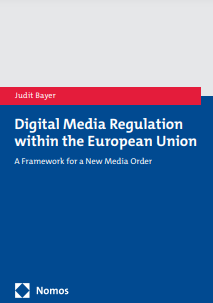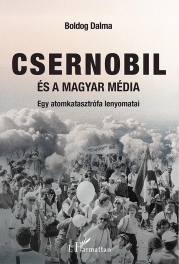Keyword – propaganda
Trádler, Henrietta:
Trádler, Henrietta:
Bikini and Bar Behind the Iron Curtain
From the 1960s onwards, the Lake Balaton was an important tourist destination during the Kadar-regime. In order to enhance political stability, the state-socialist regime paid particular attention to improving the quality of everyday life. An important scene of the construction of “gulasch communism” was “the Hungarian Sea,” an attraction in the eyes of foreign tourists. During the period of political detente, the number of western tourists increased immensely. Balaton was the scene of reconciliation, and the articles published in the western press created the impression that there was a livable and pleasurable life behind the Iron Curtain.
Keywords: English press, image of Lake Balaton, Kadar-regime, propaganda, representation
Bikini and Bar Behind the Iron Curtain
Médiakutató Autumn 2020 pp. 59-69
N. Varagya, Szilvia:
N. Varagya, Szilvia:
In crisis: communication! Is communication in crisis?
The Covid-19 pandemic, caused by the SARS-CoV-2 coronavirus, reached Slovakia before the campaign period of the parliamentary elections. The intensity of the pandemic coverage by the Hungarian-language daily newspaper Új Szó was influenced by several factors such as the election campaign topics, unexpected election results and other relevant events for the Hungarian enthnic comunity, the new government’s political priorities, scandals and pandemic control measures. The frequency of pandemic thematisation in the daily newspaper followed the curves of each Covid-19 wave in Slovakia. During the studied period, as a result of party-neutral journalism, the pandemic did not become a divisive political issue for Hungarians in Slovakia. The examined contents of Új Szó (editorials, opinion articles, caricatures, op-eds of the above mentioned newspaper) mostly relied on the linguistic and stylistic turns of Slovak political communication, its hidden messages, and the emerging ‘war rhetoric’ concerning the national testing.
Keywords: Covid-19, epidemic communication, media communication, New Word journal, pandemic, political communication, propaganda, public rhetoric, Slovakia, war rhetoric
In crisis: communication! Is communication in crisis?
Médiakutató Autumn-Winter 2021 pp. 69-76
Vicsek, Ferenc:
Vicsek, Ferenc:
Mass media versus mass informedness
The Political Propaganda Indicator (PPI) measures abuses of information management, following the models of the Democracy Index created by Freedom House and of the Corruption Perceptions Index compiled by Transparency International. It is a method for measuring how corrupted the information disseminated to the public is. The PPI shows what percentage of people accept news items spread by political propaganda as true, even though they are otherwise often difficult to verify as factually correct. It shows what share of the public has a false perception of reality because of propaganda and manipulated news services. It also shows what percentage of people fall prey to false news streams and, consequently, how many of them decide in free elections on the basis of misleading, deliberately false information or concealed information as compared to a situation in which there is a level informational playing field.
Keywords: brainwashing, fake news, information policy, informedness, media regulation, media system, propaganda, press freedom, social media
Mass media versus mass informedness
Médiakutató Summer 2020 pp. 89-103
Sükösd, Miklós:
Sükösd, Miklós:
Orbán’s victims
This paper explores the key features of Viktor Orbán’s populist rhetoric, which remained essentially the same from 1989 to the 2020s. Orbán speaks in the name of the nation as a whole, envisions dangerous enemies instead of democratic political opponents, and mobilises against an external occupying power. By systematically evoking fear, the desire for revenge, and naming the ever-present enemies, he transforms historically rooted ressentiment, grievance culture and notions of (self)victimisation in Hungarian national identity into active hate politics. With his rhetoric, he awakens the desire for an authoritarian leader who saves us from a fearful and dangerous world with dictatorial state policies. Theoretically, I analyse Orbán’s speeches and their powerful impact with the concepts of speech act theory and securitisation. The texts include Orbán’s famous speech in 1989, and his series of seasonal addresses during the last twenty years (including a secondary analysis of a database of 41 speeches).
Keywords: national identity, orator, political communication, propaganda, ressentiment, rhetorics, securitisation, speech act theory, Viktor Orbán
Médiakutató Autumn-Winter 2022 pp. 59-77



